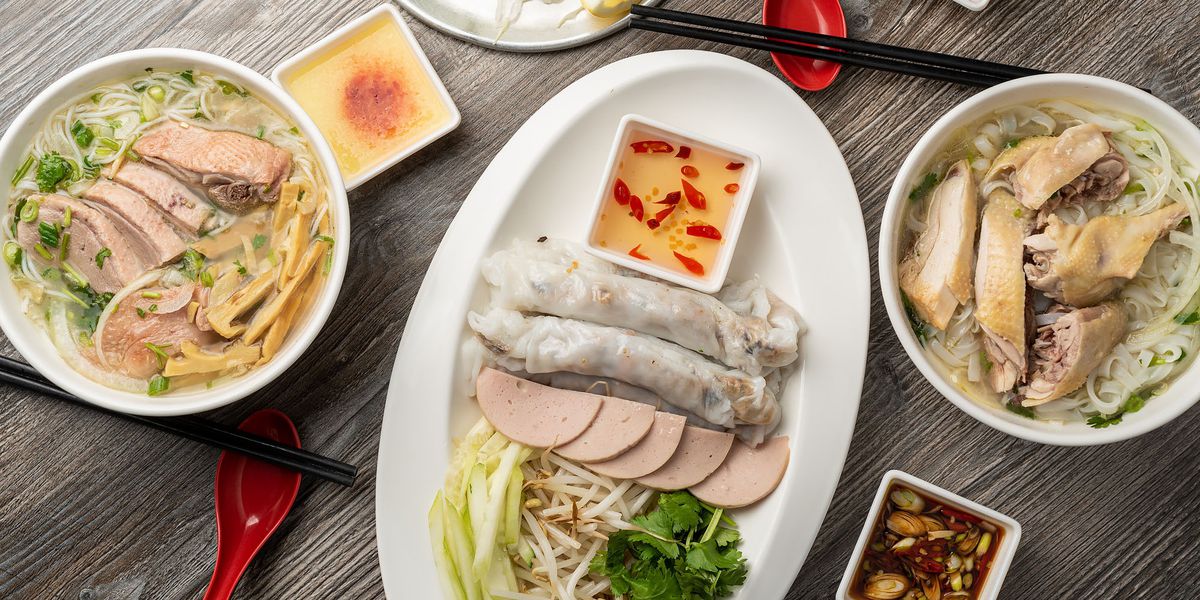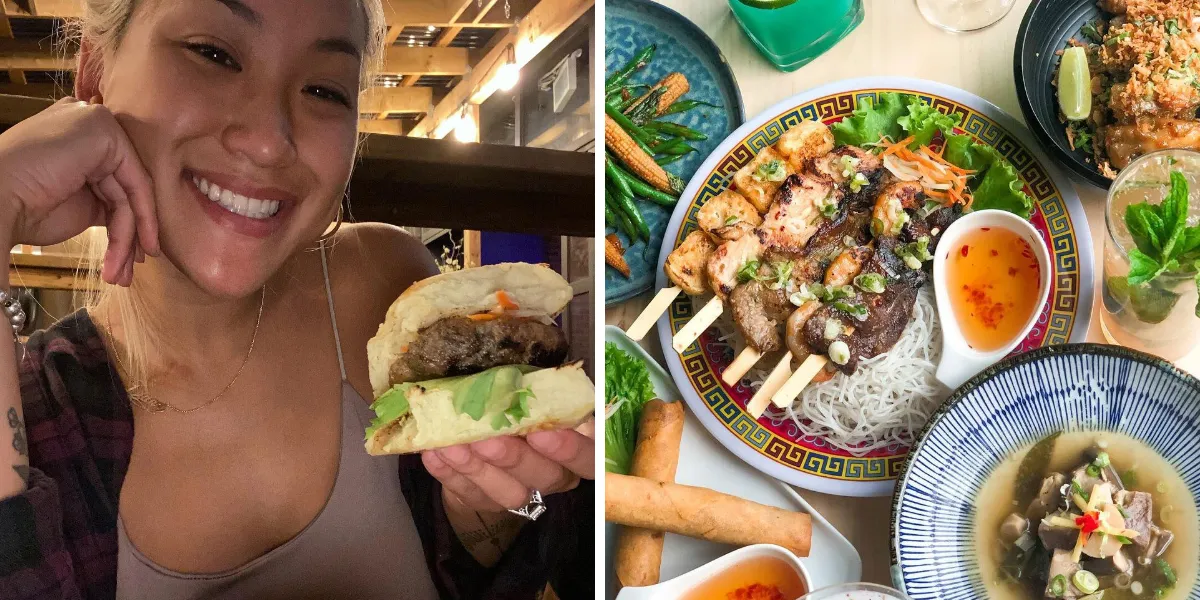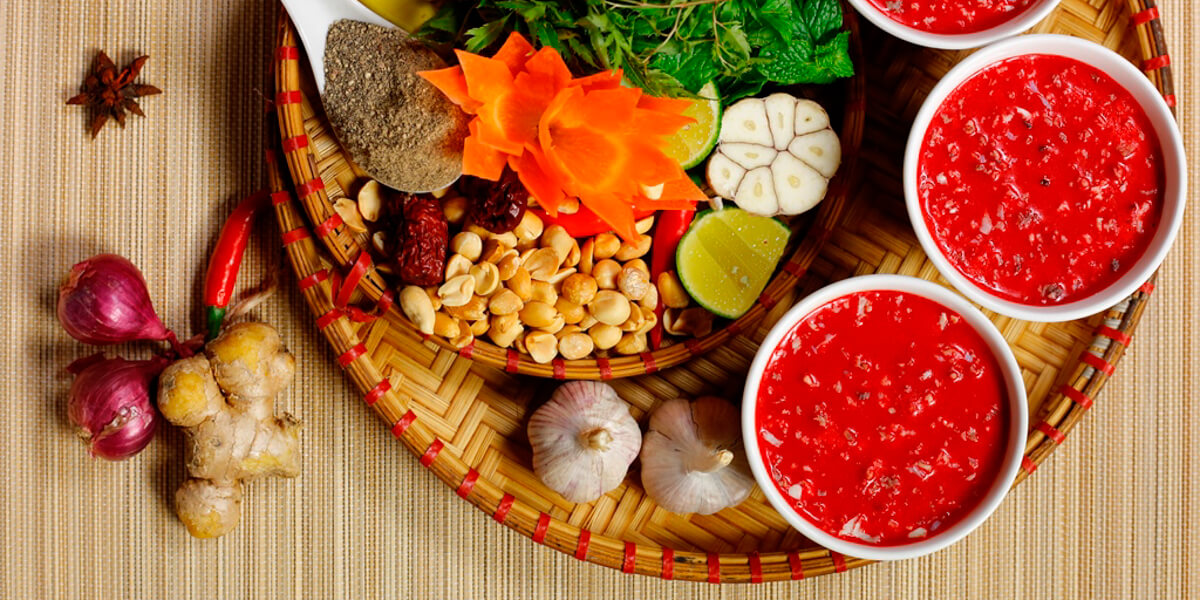Vietnam, a country nestled in Southeast Asia, is not only renowned for its stunning landscapes and rich history but also for its vibrant and diverse culinary scene. Vietnamese food is celebrated worldwide for its freshness, intricate flavors, and balance of textures. Embark on a culinary adventure as we delve into the world of Vietnam’s food culture, exploring its influences, signature dishes, regional specialties, street food, vegetarian options, beverages, markets, and more.
The Influences on Vietnamese Cuisine
Vietnamese cuisine is a harmonious fusion of indigenous flavors and international influences. Throughout its history, Vietnam has been shaped by Chinese, French, and Southeast Asian cultures, leaving an indelible mark on its culinary traditions. Chinese cooking techniques introduced stir-frying, noodles, and rice dishes, while the French brought baguettes, pâté, and coffee. Vietnamese cuisine beautifully combines these influences with local ingredients, resulting in a unique and tantalizing flavor profile.
Signature Vietnamese Dishes: Bursting with Flavor

3.1 Pho: The Soul of Vietnamese Noodles
Pho, Vietnam’s iconic noodle soup, is a culinary masterpiece that embodies the essence of Vietnamese cuisine. Made with a fragrant beef or chicken broth, rice noodles, and a medley of herbs and condiments, each spoonful of pho tells a story of heritage and tradition. Whether enjoyed for breakfast or as a hearty meal, pho tantalizes the taste buds with its aromatic broth, tender meat, and harmonious blend of spices.
3.2 Banh Mi: A Fusion of French and Vietnamese Delights
Banh Mi, a delightful Vietnamese sandwich, is a testament to the fusion of French and Vietnamese culinary traditions. This culinary marvel features a crusty baguette filled with a variety of savory ingredients such as grilled meats, pâté, pickled vegetables, and fresh herbs. The contrasting textures and bold flavors make Banh Mi a beloved street food that perfectly encapsulates Vietnam’s culinary ingenuity.
3.3 Cha Ca: Savoring the Delicacy of Turmeric Fish
Cha Ca is a beloved specialty from Hanoi that showcases the delicate flavors of turmeric-marinated fish. Served sizzling hot, Cha Ca is a dish that captivates the senses with its fragrant aroma and vibrant colors. The tender fish is pan-fried and served with fresh herbs, rice noodles, and a variety of condiments, allowing diners to assemble their own delectable combinations.
Regional Specialties: Exploring Vietnam’s Diverse Culinary Heritage
Vietnam’s regional specialties offer a captivating journey through the country’s diverse culinary heritage. From the imperial elegance of Hue cuisine to the culinary fusion of Hoi An and the bountiful freshness of the Mekong Delta, each region boasts its own unique dishes and cooking styles.
4.1 Hue Cuisine: Imperial Elegance on a Plate
Hue, the former imperial capital of Vietnam, is renowned for its refined and elegant cuisine. Influenced by royal traditions, Hue dishes are meticulously prepared, visually stunning, and bursting with intricate flavors. Some notable dishes include Banh Beo, delicate steamed rice cakes topped with savory ingredients, and Bun Bo Hue, a spicy beef noodle soup that showcases the region’s bold and rich flavors.
4.2 Hoi An: A Melting Pot of Culinary Traditions
Hoi An, a UNESCO World Heritage Site, is a culinary paradise that reflects the historical melting pot of cultures that once thrived in the region. The dishes in Hoi An are a delightful blend of Vietnamese, Chinese, Japanese, and European influences. Cao Lau, a noodle dish with charred pork, fresh herbs, and crispy rice crackers, is a must-try specialty that showcases Hoi An’s unique flavors and textures.
4.3 Mekong Delta: A Bounty of Freshness
The Mekong Delta, with its fertile lands and labyrinth of rivers and canals, is a cornucopia of fresh produce. The region’s cuisine emphasizes the use of locally grown fruits, vegetables, and herbs, resulting in vibrant and refreshing flavors. Don’t miss out on enjoying fresh river fish, tropical fruits, and coconut-based dishes that celebrate the abundance of the Mekong Delta.
Vietnamese Street Food: The Art of Eating on the Go
Vietnam’s vibrant street food culture is an integral part of daily life. From bustling markets to humble street stalls, the streets of Vietnam come alive with an array of mouthwatering dishes. Sample delicious treats like Banh Xeo (Vietnamese savory pancakes), Bun Cha (grilled pork with noodles), and Goi Cuon (fresh spring rolls) as you immerse yourself in the lively atmosphere of Vietnam’s street food scene.
Vegetarian and Vegan Delights: Embracing Nature’s Bounty
Vietnamese cuisine caters to the vegetarian and vegan palate with an abundance of plant-based delights. From fresh spring rolls filled with tofu and vibrant vegetables to flavorful stir-fried dishes with mushrooms and fragrant herbs, vegetarians and vegans can indulge in Vietnam’s culinary offerings without compromise. Embrace nature’s bounty and savor the wholesome flavors of vegetarian and vegan Vietnamese cuisine.
Vietnamese Beverages: A Refreshing Symphony of Tastes
7.1 Traditional Vietnamese Coffee: An Indulgent Ritual
Vietnamese coffee is renowned for its unique brewing method and rich, bold flavors. The traditional Vietnamese coffee is made by slowly dripping hot water through a metal filter, resulting in a strong and aromatic brew. Enjoy it hot or iced, with or without condensed milk, and experience the delightful ritual of savoring Vietnamese coffee.
7.2 Nuoc Mam: The Quintessential Vietnamese Fish Sauce
Nuoc Mam, or fish sauce, is a quintessential ingredient in Vietnamese cuisine. Made from fermented anchovies, this pungent sauce adds depth and umami to many Vietnamese dishes. Used as a dipping sauce, marinade, or flavor enhancer, Nuoc Mam is a cornerstone of Vietnamese flavors and an essential component in creating authentic Vietnamese dishes.
Exploring Vietnamese Markets: A Feast for the Senses
Exploring Vietnamese markets is a sensory experience that allows you to immerse yourself in the vibrant colors, enticing aromas, and bustling energy of daily life in Vietnam. From the famous Ben Thanh Market in Ho Chi Minh City to the vibrant floating markets of the Mekong Delta, these markets offer an abundance of fresh produce, spices, street food, and traditional handicrafts. Wander through the maze of stalls, interact with friendly vendors, and discover the culinary treasures that Vietnam’s markets have to offer.
Vietnamese Food Culture: Stories, Customs, and Celebrations
Vietnamese food culture is deeply intertwined with the country’s history, traditions, and social gatherings. From the elaborate rituals of Vietnamese weddings to the communal feasts during Lunar New Year celebrations, food plays a central role in bringing people together and forging connections. Explore the fascinating stories behind traditional dishes, uncover the customs associated with dining etiquette, and gain insight into the cultural significance of Vietnamese cuisine.
Conclusion: Embark on a Gastronomic Journey to Vietnam

Vietnamese cuisine is a captivating tapestry of flavors, aromas, and textures that reflect the country’s rich heritage and diverse culinary traditions. From the fragrant bowls of pho to the vibrant street food scene, Vietnam offers a gastronomic adventure that will leave you craving for more. Whether you’re a food enthusiast or an adventurous traveler, embark on a journey to Vietnam and let its culinary delights ignite your senses.
FAQs (Frequently Asked Questions)
11.1 What are some must-try dishes in Vietnam?
Vietnam boasts a plethora of must-try dishes. Some popular choices include pho, banh mi, banh xeo, bun cha, and fresh spring rolls.
11.2 Is Vietnamese food spicy?
Vietnamese cuisine is known for its balanced flavors rather than extreme spiciness. However, certain dishes may contain chili peppers or spicy condiments, but they can often be adjusted according to personal preference.
11.3 Are vegetarian options readily available in Vietnam?
Yes, Vietnam offers a wide range of vegetarian and vegan options. Many local dishes can be prepared without meat or animal-derived ingredients, making it relatively easy for vegetarians and vegans to find delicious meals.
11.4 What is the significance of fish sauce in Vietnamese cuisine?
Fish sauce, or nuoc mam, is a fundamental ingredient in Vietnamese cooking. It adds depth, umami, and a distinctive flavor to many dishes, serving as a cornerstone of Vietnamese culinary tradition.
11.5 Can you recommend any famous food markets in Vietnam?
Some famous food markets in Vietnam include Ben Thanh Market in Ho Chi Minh City, Dong Xuan Market in Hanoi, and Cai Rang Floating Market in the Mekong Delta. These markets offer a wide variety of fresh produce, street food, and local delicacies.

John Xiong is a passionate writer, researcher, and wellness enthusiast, dedicated to exploring the intricacies of human health and well-being. With a profound interest in holistic healing practices, John’s expertise lies in the field of alternative therapies and mind-body connections. As the author behind the thought-provoking articles on “xiong.ac

